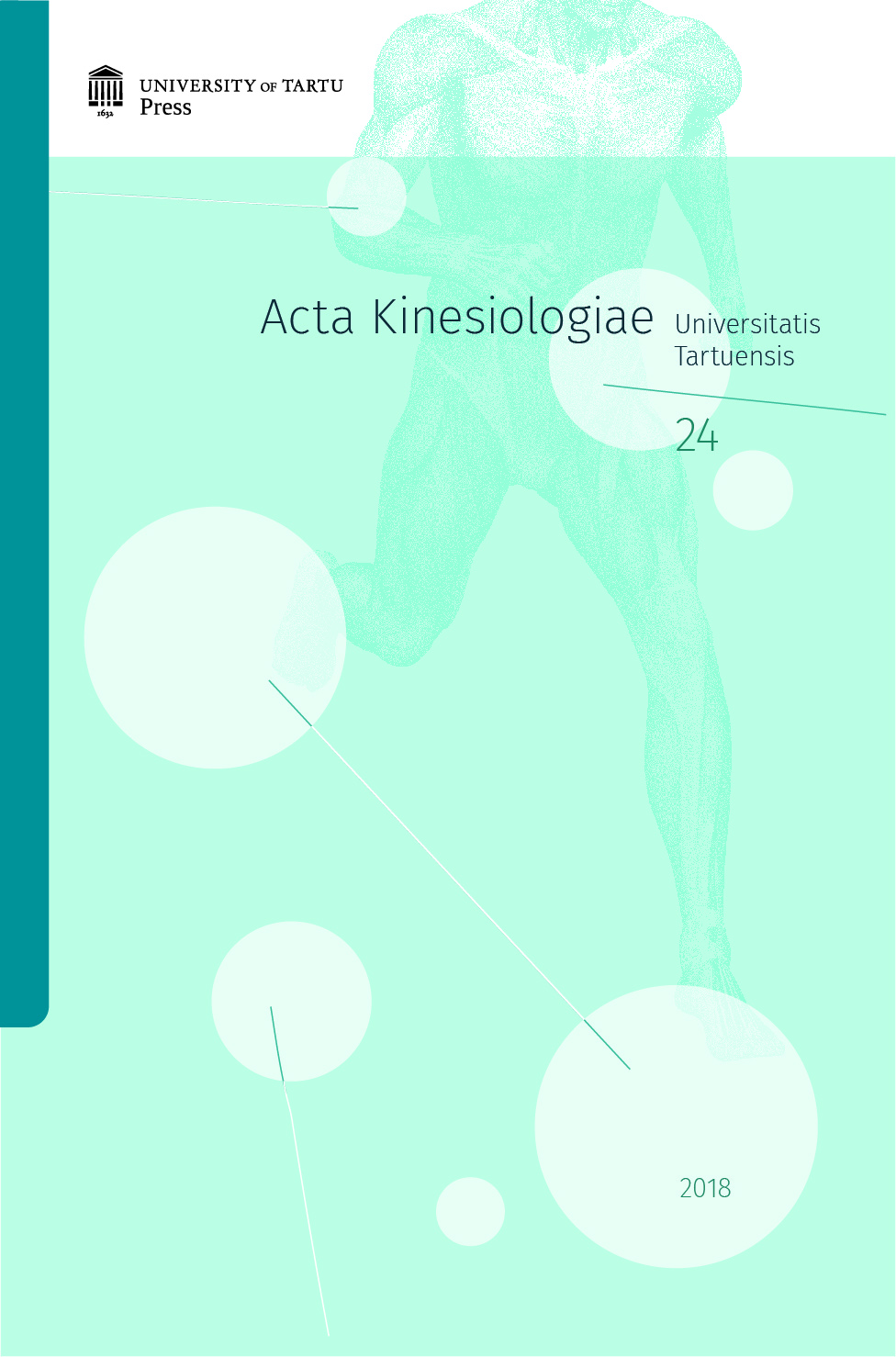Prevalence of ACSL (rs6552828) polymorphism among runners
DOI:
https://doi.org/10.12697/akut.2018.24.09Keywords:
sprinters, long distance runners, genetic polymorphism, ACSLAbstract
The ACSL A/G polymorphism is associated with endurance trainability. Previous studies have demonstrated that homozygotes of the minor AA allele had a reduced maximal oxygen consumption response to training compared to the common GG allele homozygotes, and that the ACSL A/G single nucleotide polymorphism explained 6.1% of the variance in the VO2max response to endurance training. The contribution of ACSL single nucleotide polymorphism to endurance trainability was shown in nonathletes, however, its potential role in professional athletes is not clear. Moreover, the genetic basis to anaerobic trainability is even less studied. Therefore, the aim of the present study was to examine the prevalence of ACSL single nucleotide polymorphism among professional Israeli long distance runners (n=59), middle distance runners (n=31), sprinters and jumpers (n=48) and non-athletic controls (n=60). The main finding of the present study was that the ACSL1 AA genotype, previously shown to be associated with reduced endurance trainability, was not higher among sprinters and jumpers (15%) compared to middle- (16%) and long-distance runners (15%). This suggests that in contrast to previous studies indicating that the ACSL1 single nucleotide polymorphism may influence endurance trainability among non-athletic individuals, the role of this polymorphism among professional athletes is still not clear.


